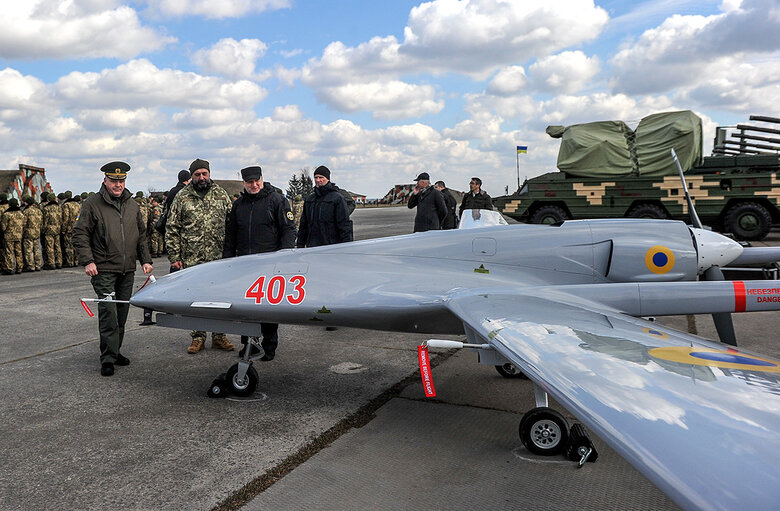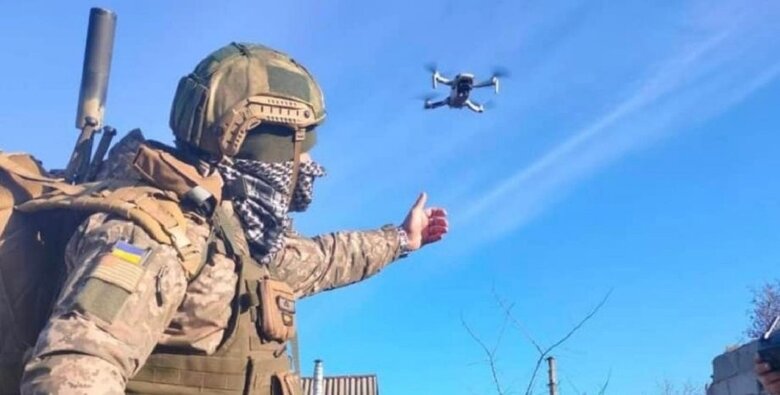How Ukraine became global leader in UAV production and deployment
Drone Industry
The development of unmanned systems in Ukraine began with Russia’s invasion of Crimea, Donetsk, and Luhansk regions in 2014. Initially intended for aerial photography, drones soon started being used for reconnaissance.
However, as the aggression escalated, it became clear that modern technologies were needed to deliver effective strikes against the enemy.
While volunteers were modifying commercial, mostly Chinese DJI Mavic-type drones, private Ukrainian companies were developing their own models. Importing UAVs proved nearly impossible; foreign manufacturers at the time were unwilling to sell their platforms for a war against Russia.
At the origins of Ukrainian drone manufacturing were companies such as DEVIRO ("Leleka-100"), Ukrspecsystems (PD-1, PD-2), Skyeton (Raybird-3), and Athlon-Avia ("Furiia").
After Russia’s full-scale invasion in February 2022, production, development, and deployment of UAVs in Ukraine increased dramatically. The drone industry became a key pillar of the country’s defense apparatus. It was precisely these unmanned systems that helped Ukraine "bulk up" amid shortages of Western ammunition and adapt to changing battlefield conditions.
The Ukrainian experience has been revolutionary. Current defense strategies of leading countries, such as the United States, are being rapidly rewritten to incorporate the capabilities unlocked by unmanned systems.
Before the full-scale war, Ukraine had seven domestic drone manufacturers. Now, over 500 companies operate in the country producing drones, with more than 240 designs codified, according to First Vice Prime Minister and Minister of Digital Transformation Mykhailo Fedorov. Today, Ukraine produces ground, sea, and aerial drones, including FPV, bombers, interceptors, kamikazes, reconnaissance, and long-range deep-strike UAVs.
Ukraine has become a pioneer in developing and deploying unmanned marine vehicles (UMVs). For example, Magura and Sea Baby drones have been used to attack Russian ships and infrastructure in the Black Sea. A unique achievement was the strike on a Russian Mi-8 helicopter by a maritime drone armed with an R-73 missile in 2024.

At the beginning of the full-scale war, in July 2022, the government launched the "Army of Drones" strategy, followed in 2023 by the Brave1 platform to support military innovations. Since its inception, approximately 500 grants totaling 1.3 billion hryvnias have been awarded. The program is backed by the state budget, but the industry still critically needs additional funding.
By early 2025, according to former Defense Minister Rustem Umerov, Ukraine had become the world’s largest manufacturer of tactical and long-range unmanned aerial vehicles. Last year, 96% of all UAVs for the Defense Forces were produced by domestic manufacturers.
Increased investments, improved supply chains, and more efficient technological processes have boosted the production capacity of FPV drones alone from 20,000 units in 2024 to 200,000 per month in 2025. According to Ukrainian President Volodymyr Zelenskyy, Ukraine is capable of producing no less than 4 million drones annually
However, last year, Ukrainian drone manufacturers operated at only 37% of their capacity, government orders were insufficient due to a lack of funding. This issue could be resolved by arms exports, but these have been banned since 2022.
Read also: Build with Ukraine: How will Zelenskyy’s announced program impact Ukraine’s defense industry?
And, according to Defense Minister Denys Shmyhal, the government currently does not plan to lift this ban, despite the state’s financial shortages. He emphasizes that before exporting anything, the needs of the Ukrainian Defense Forces must be fully met.
Despite these conditions, the drone industry continues to develop, along with the production capacities for components essential to UAVs. For example, Vyriy Drone sources 70% of its components from the domestic market. In March 2025, the company announced the release of its first batch of 1,000 drones fully made from domestically produced core components.
"The global defense industry is moving towards full unmanned systems. This is one of the main trends. Accordingly, the most pressing issues, in our view, concern controlling these unmanned systems, particularly drone "swarm" control technologies and, of course, countering such systems.The second trend is a consequence of the first, the number of manufacturers of weapons and ammunition for drones is rapidly increasing. Ukraine is at the forefront of this process," says Serhii Honcharov, director of the National Association of Defense Industry of Ukraine (NAUDI).
Classification of drones and their use
In the military sphere, UAVs can be roughly divided into three classes based on their levels of application: tactical, operational, and strategic. The difference lies in their flight range, surveillance capabilities, and strike potential.
At the tactical level, drones are used for reconnaissance, observation, artillery fire adjustment, and striking targets on the battlefield. Examples include reconnaissance drones like the Leleka-100 and Furiia, which have an operational radius of up to 75 km.
At the operational level, drones support coordination between different units, conduct reconnaissance deep into enemy defenses, and carry out strikes on critical targets.
Gasoline-powered reconnaissance drones, capable of staying airborne for 10 hours or more, are often used at this level, such as the PD-2, Raybird-3, and newer electric models like the Shark-M and Leleka-100M2, which feature extended flight endurance.

At the strategic level, drones are used to gather intelligence over large areas, assess the situation, and strike strategically important targets such as enemy air defense positions or missile forces.
The most well-known strategic drone to Ukrainians is the Turkish Bayraktar TB2, which became a symbol of resistance against Russian occupiers in 2022. However, Ukraine already has its own equivalents. For example, the Horlytsia system (AN-BK-1), which the Antonov plant began developing before the full-scale war, and the Liutyi drone (AN-196), which has already become legendary. These drones were the ones that attacked the Engels airbase in the Saratov region in March 2024. The manufacturer-stated flight range of the kamikaze drone "Liutyi" is 1,000 km.

Undoubtedly, a creative approach plays a significant role in the use of unmanned systems. Take, for example, Operation "Spiderweb," the final stage of which the Security Service of Ukraine (SSU) carried out on June 1, 2025, striking Russia’s strategic aviation deep behind enemy lines. The Bila airbase, for instance, is located 4,400 km from the Ukrainian border.
FPV drones were the primary means of attack. Over 100 drones were remotely launched from trucks that approached the airfields. According to the SSU, the special operation damaged 41 aircraft, amounting to the destruction of 34% of Russia’s strategic aviation.
Drone "kill zone"
The widespread use of drones at various levels creates a so-called "kill zone" on the front, a zone of near-complete target destruction, that has significantly expanded by the fourth year of the full-scale war. Where it once ranged from 500 meters to 2 kilometers, it now stretches to 5 kilometers, and in some frontline sectors, up to 7–10 kilometers.
The war now resembles a long-range remote confrontation rather than infantry or armored combat. FPV drones are currently locating and destroying targets before they even reach their destination.
Logistical problems caused by the "kill zone" are so severe that the Russians have begun widely using pack animals to transport supplies.
However, the occupiers are also actively increasing their drone capabilities, partly copying Ukrainian military tactics, which creates similar challenges for our troops. There are known cases where Ukrainian soldiers have had to walk up to 20 kilometers on foot to reach their positions
"Nowadays, you can’t approach the frontline closer than about 10 kilometers in armored vehicles or pickups. That’s the minimum. Unless it’s an evacuation. Otherwise, getting closer is impractical and extremely risky," said Bud’, commander of the Azov brigade’s drone battalion, in an interview on Radio NV.
The active development of drones resistant to electronic warfare (EW) systems using fiber-optic communication only worsens the situation. The Russians have already established mass use of fiber-optic drones with a flight range of about 20 km. The Ukrainian army is also actively adopting this technology, albeit more slowly.
Experts suggest that, in the medium term, engagement ranges of 50–60 km will no longer be anything out of the ordinary. This will be driven, in particular, by the rapid development of relay drones/aerostats, affordable fixed-wing FPV drones, and optical navigation and homing systems.
"Earlier we thought the grey zone would be 10–20 kilometers. We were wrong. In the future, the grey zone may expand to 40–50 kilometers. There will be more drones, and they will fly farther," says Yehor Firsov, platoon commander of strike UAVs with the 109th Territorial Defense Brigade.
When it comes to engaging targets at the operational depth of the front, there is a need for critically important mid-range strike drones. These drones differ from other unmanned strike systems primarily in delivering surgical-precision hits on EW assets, air defense systems, artillery pieces, and the like, tasks previously performed by Western multiple-launch rocket systems.
The Armed Forces of Ukraine lack such missiles, and they are far from cheap. Expensive missiles can, and should, be replaced with drones. This is where Ukrainian technologies and our determination to win come to the fore. Some Ukrainian companies are already producing their own medium-range strike drones, such as the Bulava and RAM-2, which have been successfully employed.
Ukrainian President Volodymyr Zelenskyy has initiated the "Line of Drones" project to scale up the most effective unmanned systems used by Ukraine’s military, helping our defenders carry out the most complex missions. The minimum objective is to completely halt the enemy’s advance, among other things, by creating a "kill zone" at least 10–15 km deep and to detect and destroy targets before they approach our positions.
Experts predict that "Line of Drones" units will likely not be spread thin across all 1,200 km of the active front but instead be deployed in concentration on the most challenging axes.
However, drones have their drawbacks. They are not all-encompassing, and they do not provide target engagement as rapidly as artillery. Electronic warfare systems also play a role.
Sources familiar with the situation told Censor.NET that the enemy has already begun using new assault tactics, which could affect the entire architecture of drone-based defense. In other words, the Russians are seeking ways to counter our unmanned systems, hunting not only for the crews but for the drones themselves. And although the rate at which Russians shoot down Ukrainian drones is still not comparable to the number downed by Ukrainian forces, this practice will likely only become more widespread, experts suggest.
The situation at the front is decided over weeks, not years, so methods of countering the occupiers must be improved now, before the enemy adapts to current realities. This requires synergy between the state and drone manufacturers.

